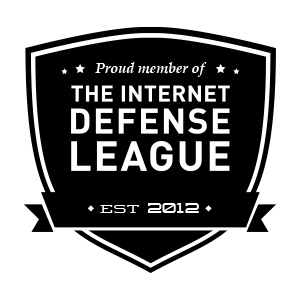Forum Replies Created
-
AuthorPosts
-
Are you asking how to remove the Google Tag Manager plugin or are you referring to some GTM code that is showing up on your site and you are not sure where it came from?
Can you please send me a link to the page you are asking about so that I can see what you mean?
December 11, 2025 at 1:32 pm in reply to: /plugins/pods/deprecated/deprecated.php false positive? #164686I have whitelisted this usage only because it is still used in this fairly active pods plugin, even though it was found in /plugins/pods/deprecated/deprecated.php which shows that even the developers know that this code is deprecated and should be removed. This code probably isn’t even safe any more because the file it includes has not existed in any WordPress distribution since 3.8.9 which is over 10 years old now. So if this code was executed on any WordPress site that has updated within the last ten years then it would cause a fatal error for trying to include a file that doesn’t exist. But it’s not malicious so I have decided to whitelist it for now.
I may even change my mind and re-include this code later because it is unsafe and if you were to use my plugin to fix this file and remove that include line then it would only serve to prevent your site from crashing on this error if your json_encode function were somehow blocked or removed from your PHP libraries.
That is unusual and very troubling. Can you please look in your error_log files to see what is causing this issue?
You are welcome to send me your log file if you are not sure what to look for.
Thanks for reporting this but I do absolutely need more information if I am to fix this issue. Namely, I need to know which plugin files are being wrongly identified as a threat. Can you please send me those files so that I can examine the code in them and fix the definition that is flagging this code?
You can email the files directly to me or send me a link to where I can download these plugins myself.
Thank you for reporting this issue. I have confirmed that this is a False Positive and I have released a new definition update that fixes this issue so that the safe usage of the path building formula will be omitted from future scans. Please download the latest definition updates and confirm that this plugin file is no longer detected as a Known Threat.
There are no conflicts with my plugin and any other security plugin that I am aware of.
In general, there are some feature that might be duplicated within various security plugins but they each work a little differently and so one might work better in certain circumstances than the the next, it all depends on the type of attack and the kind of mitigation employed for that attack. For example, the Brute-Force Protection in my plugin is invoked prior to the WordPress bootstrap, so my plugin will redirect brute-force attacks before WordPress (and most other plugins) are loaded and this will reduce the load on your server which could prevent a DDoS attack from bringing down the site, but it might also prevent other security plugins from logging the attack (because they are not yet loaded or connected to your database before the attack is deflected). I wouldn’t call this a direct conflict but it could affect the statistics recorded by those other plugins.
I have had instances in the past were other security plugins have either hijacked one of my hooks into the WordPress code library or even changed one of my own lines of code, which had caused a substantial failure of my plugin to preform essential tasks, but I was always able to work out those conflicts and find a suitable solution for all involved.
If you even find any issues with my plugin working in conflict with another plugin then please report it to my right away and I will find a solution for you.
September 12, 2025 at 3:00 pm in reply to: New malicious files and infection that the program cannot detect #159842Thanks for this new one. I have just added that one to my latest definition updates too.
September 11, 2025 at 6:13 am in reply to: New malicious files and infection that the program cannot detect #159747Thanks for posting the contents of those files that contained new threats. I added the one from your first post to my definition updates yesterday so that it came be automatically removed with my plugin and I am working on this last one now so that it too can be found and automatically fixed.
Rogue admin users are hard to detect automatically because there is no universal way to tell the difference between those whom you would have added as an admin user on purpose and those whom you did not want to be added. But my plugin should have been able to find and fix the malicious code that added that user and also the code that was concealing it. If that code was also not detected and you can find it in a newly added plugin file or a theme file like the functions.php file then please also send me that code so that I can update those definitions as well.
Malicious code is always changing and evolving to avoid detection. That’s why I am always releasing new definition update to keep up with the new threat variations. We need to see any new variants to that they can be identified and defined for future scans. So far, what you are doing combat this threat is good but you will need to add one critical step to your cleanup process in order to track down the source of the infection to find and fix the root cause. For every infected file you find you will need to stat the file as it is on the server before you delete it or make any changes to the file. You need to get the exact times that the file was last modified or changed before your own changes to that file overwrite the timestamps of the malicious changes. Then you can use those exact server timestamps and cross-reference the activity in your access_log files to figure out what exploit was used to plant those files or to inject that malicious code into those files. Follow that trail back as far as you can and you should be able to find the first breach and patch that exploit to prevent further attacks.
Please let me know if you get stuck and need any further assistance, and please also send me any new threat you find so that my plugin can help you remove them, and any other copies of those threats, from your server.
Thanks for sending me these malicious code snippets. I have added all 3 of these new code variants to my definition updates. Please let me know if you find any more.
I see your homepage in your sitemap and there is nothing in your robots.txt file to prevent indexing that page, so I’m would guess that Google just has not refreshed their own cached index of that URL yet. I also still see one listing in the Google search results for your site that shows the Chinese characters you were talking about, but that links to a 404 on your site, so it should also fall out of the search index in time (whenever Google gets around to rechecking the cache they have of that page and see that it is now a 404).
It looks to me like you have done everything right and the site look clean now, so it is just a matter of getting Google to finish updating their indexes of your site. There should be a way for you to request a review of those pages in your Google Console (Webmaster Tools) account. You can try the manual process of “Fetch as Googlebot” to verify that the Chinese character page does actually render a 404 for the Googlebot when you test that URL, and you can also test the root URL to make sure that Google can fetch your homepage without errors. That will at least confirm that this is just a waiting game.This warning is just to let you know that an output buffer handler by your LiteSpeed caching plugin is being invoked on my plugin setting page and therefore could be affecting the results of the scan or the overall scan time. This is not necessarily something that you need to do anything about but it is generally not a good idea to be running any caching while the scan is taking place. It is up to you if you want to temporarily deactivate the caching plugin and delete all the cache files before running the Complete Scan and then restart the caching after the scan is done.
Some of those code snippets are clearly truncated or missing something from the beginning of the script. It may be true that not all the script in the affected files is malicious but it would help me greatly to see the whole contents of those infected files (including any non-malicious code that might have been in the file before it was appended with these malicious lines of code) so that I can determine the pattern in the affected scripts and make sure that all the offending code can be removed without damaging the syntax of the original code.
Could you please look for a backup on your server that might contain the whole of the infected files and send those to me directly via email attachments?
Thanks for reporting this! I have confirmed this False Positive and corrected the last definition update with a new definition just released (version P6FEO). After downloading the new definitions please run the scan again and confirm that it no longer finds and flags these files as Known Threats.
Sorry for the inconvenience and thanks again for reporting this issue!
You can disable the protection for user enumeration on the Firewall Options page in your wp-admin.
Ok, I see that the offending script is still present. I have just released a new definition update that should find it this time. Please download the latest definitions version P3RF4 and if it still does not find anything can you please send me a full screenshot of the scan results page with the scan setting showing?
-
AuthorPosts

